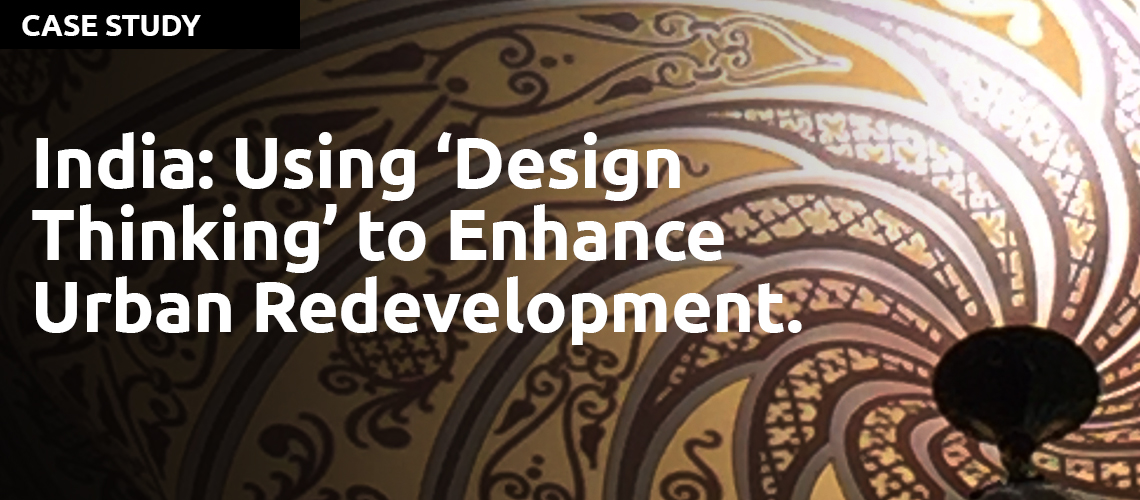
The discourse on urban planning and development has evolved over the last century with top-down methods of planning urban spaces giving way to bottom-up approaches that involve residents and other stakeholders in the design process. While the notion of participation and user involvement is considered critical to the design of appropriate and acceptable urban forms, there is no clear consensus in the literature on the methodology to be used to involve users and stakeholders in the design process. In this paper, we propose that the use of ‘Design-Thinking’ – a methodology for Human-Centred Design that is often used in product design and related industries – may be an effective methodology for engaging stakeholders in the urban design domain.
The Design-Thinking approach iteratively encompasses an empathizing phase where deep-dive studies are conducted to understand the users’ needs, a project brief definition phase, an ideation phase and rapid-prototyping and testing phases to arrive at an appropriate design solution. Taking the example of the redevelopment of a slum in the city of Srirangapatna in South India, we describe how we implemented the Design Thinking process over a period of one year to involve slum dwellers in the re-design of their own neighborhood. We then show how designs developed through this process were different from a design developed prior to the use of Design Thinking due to the generation of new insights in the process. Furthermore, the residents of the slum almost unanimously indicated that one of the designs generated through the Design Thinking process was their preferred choice for the redevelopment of their slum, indicating the ability of the process to generate acceptable and potentially sustainable designs. Finally, residents who went through the Design Thinking process also demonstrated greater ownership towards this design choice and expressed an increased willingness to work with the local political authorities to contribute to the development of the selected design. The key contributions of the paper are to highlight the applicability of Design Thinking as a methodology for user-centric design in urban communities and to propose that Design Thinking can lead to the discovery of solutions that enhance the satisfaction of local communities.
